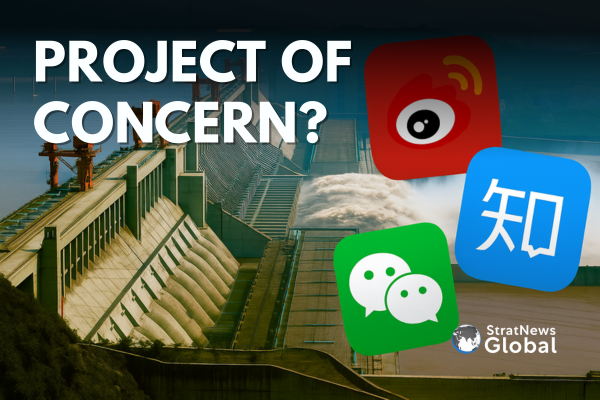Two parallel but contradictory narratives were visible as China announced it had begun work on the multibillion dollar hydropower project on the Yarlung Zangbo, which flows into India as the Brahmaputra.
The one from China was enthusiastic and applauding while the one from India was pesimisstic and negative.
Chinese media outlets and social platforms like Weibo, Zhihu and WeChat went live with nationalistic commentary, with many netizens confident it would propel Tibet into the position of a growth hub for China. Oddly, some even said it would serve as a “geopolitical buffer” against India. Other commentators said the development would transform Tibet and result in “strategic rebalancing” along the border with India.
Hu Xijin, former editor of the Global Times, posted shortly after the project was announced. He implied that India is following the West by criticising China’s major infrastructure projects while failing to acknowledge their success. Drawing comparisons to previous projects like the Three Gorges Dam and Qinghai-Tibet Railway, Hu dismissed Indian and Western criticism as repetitive and biased.
“Western media never congratulates us on projects like the Motuo Hydropower Station,” Hu wrote. “They focus only on India’s water concerns or exaggerate possible environmental impacts.”

Another popular nationalist influencer on Weibo released a three-minute video arguing that India’s concerns about the dam are exaggerated and overly emotional.
Many posts questioned Prime Minister Narendra Modi’s silence on the issue and wondered if it was a sign of diplomatic weakness. “Modi’s silence hides three shackles India cannot admit,” one widely shared commentary read, referring to India’s economic dependency on Chinese rare earth supplies, its military vulnerabilities, and its diplomatic isolation.
On Zhihu, multiple articles dismissed Indian concerns about China weaponising the waters of the Yarlung Zangbo as “fear mongering”. They argued that flooding is already a recurring issue in the Brahmaputra River basin and suggested controversially, that the Chinese dam might actually help reduce flood risks downstream.
Some commentators even referenced Assam Chief Minister Himanta Biswa Sarma, praising his more balanced tone and focus on dialogue with China, rather than panic.

Chinese media highlights the project’s environmental standards and clean energy potential. In fact, Tibet’s integration into China’s broader energy and transport infrastructure is seen as an economic necessity and a geopolitical safeguard.
With India is yet to issue an official response, water experts have suggested that since 70% of Brahmaputra waters are sourced from the monsoon and other rivers in Arunachal Pradesh, there should be no great concern about the Yarlung Zangbo project.
But China going ahead with a project which has transboundary implications, has come in for comment and criticism in India. China’s miserly efforts at sharing water resources data has been widely slammed, also its refusal to look at water as humanity’s shared resource and therefore the need to discuss with neighbours.
Research Associate at StratNewsGlobal, A keen observer of #China and Foreign Affairs. Writer, Weibo Trends, Analyst.
Twitter: @resham_sng





